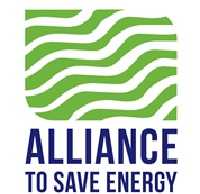U.S. Green Building Council Launches Multifamily Midrise Design Competition
Green housing competition focused on entire city block near downtown New Orleans
Washington, DC – May 3, 2011 – (RealEstateRama) — The U.S. Green Building Council (USGBC) has launched its first-ever Multifamily Midrise Design Competition. Based on USGBC’s LEED for Homes Multifamily Midrise green rating system, the competition offers professionals and students a unique opportunity to present their solutions for sustainable design for multifamily buildings of four to six stories.
Focusing on a specific site located in the 1300 block of Oretha C. Haley Boulevard between Thalia Street and Erato Street in New Orleans, the competition site occupies an entire city block and is the location of the former Myrtle Rosebella Banks Elementary School. The existing facility occupies less than half of the site and comprises a three story, roughly 40,000 square foot masonry structure.
“We decided to focus on the rebuilding of New Orleans for the competition,” said Kelsey Mullen, Director of Residential Business Development, U.S. Green Building Council. “The rebuilding efforts in New Orleans are something that USGBC has continued to be a part of since the flood waters began receding five years ago. Our goal for the Multifamily Midrise Design Competition is that it demonstrates excellence in mid-rise design while at the same time helping to revitalize the O.C. Haley corridor.”
The competition calls upon applicants to design a new four-to-six story residential mixed-use building/complex in combination with a gut-rehab renovation and re-commissioning of the former school building.
Highlights of the competition:
• Storm Resistance: Designs must incorporate strategies for resilience, including the ability to withstand hurricanes with 150 mph wind. Finished floor elevation of all new construction may be no lower than 7 ft. above grade.
• Landscape Design: Competition entries must reflect attention to landscape detail, including but not limited to landscape design and interaction with the designed structures.
• Education Plan: Competition entries must include proposed methods for educating occupants on principles of sustainability, including but not limited to efficient use of energy and water. This is a pre-requisite for successful entries. Failure to comply with this requirement may result in disqualification.
• LEED for Homes Multifamily Midrise Rating System: Designs must follow the LEED for Homes
Multifamily Midrise Green Building Rating System. Designs must demonstrate the ability to achieve LEED certification at the LEED Platinum level if constructed.
The competition, which is sponsored by Autodesk closes August 1, 2011. The winner will be announced at the U.S. Green Building Council’s annual Residential Summit, which will be held this October in Toronto, ONT in conjunction with the Greenbuild Conference & Expo. In an effort to reduce environmental impact and carbon emissions, the judging for the competition will occur 100% remotely and completely paperless.
U.S. Green Building Council
The Washington, D.C.-based U.S. Green Building Council is committed to a prosperous and sustainable future for our nation through cost-efficient and energy-saving green buildings. With a community comprised of 79 local affiliates, 16,000 member companies and organizations, and more than 155,000 LEED Professional Credential holders, USGBC is the driving force of an industry that is projected to contribute $554 billion to the U.S. gross domestic product from 2009-2013. USGBC leads an unlikely diverse constituency of builders and environmentalists, corporations and nonprofit organizations, elected officials and concerned citizens, and teachers and students.
LEED
The U.S. Green Building Council’s LEED green building certification system is the foremost program for the design, construction and operation of green buildings. Nearly 40,000 projects are currently participating in the commercial and institutional LEED rating systems, comprising nearly 8 billion square feet of construction space in all 50 states and 117 countries. In addition, more than 10,000 homes have been certified under the LEED for Homes rating system, with nearly 38,000 more homes registered.
By using less energy, LEED-certified buildings save money for families, businesses and taxpayers; reduce greenhouse gas emissions; and contribute to a healthier environment for residents, workers and the larger community.
Contact:
Ashley Katz
Communications Manager, USGBC
202.742.3738
Follow us on Twitter at @USGBC













